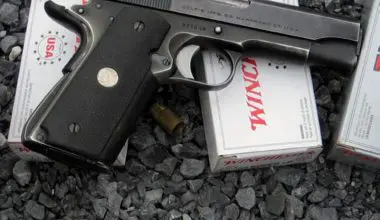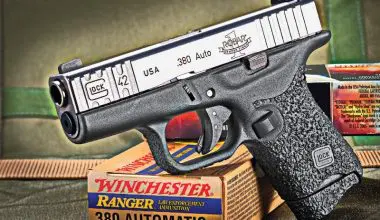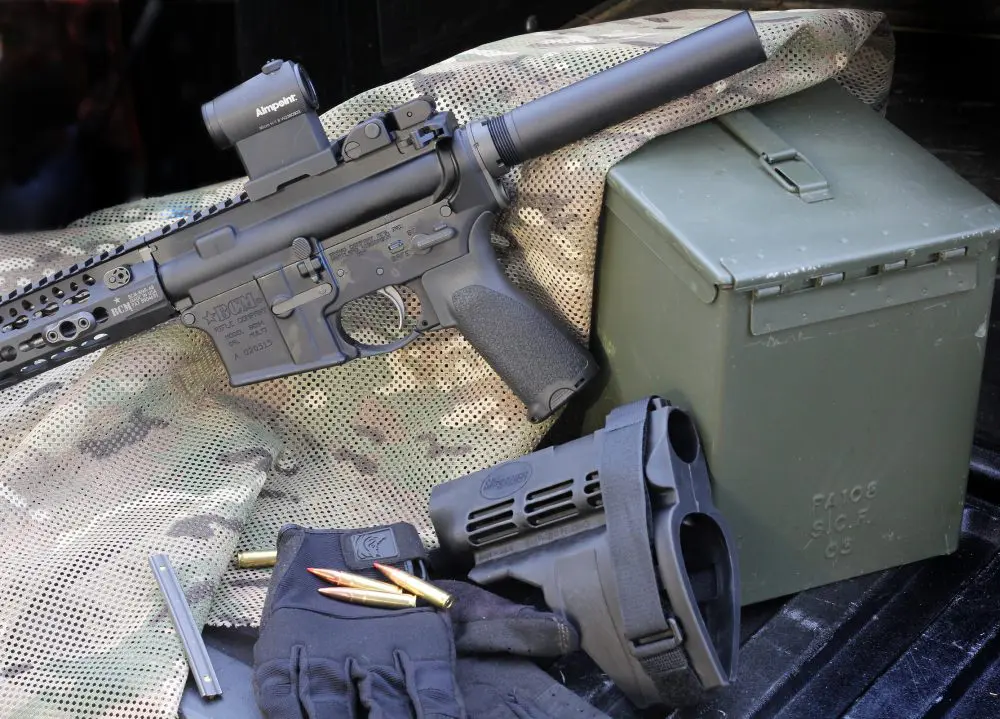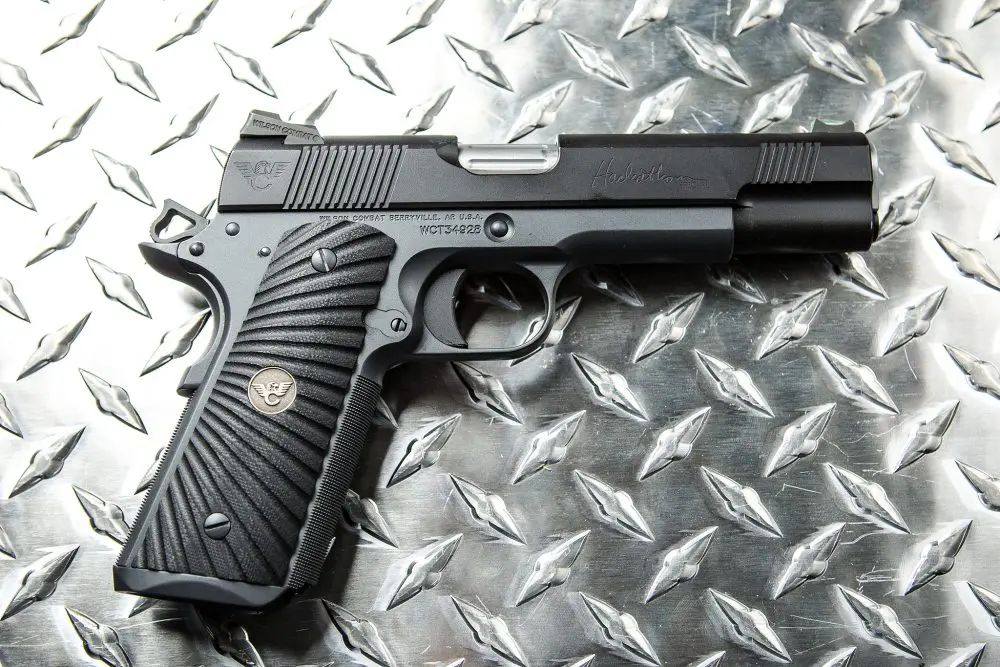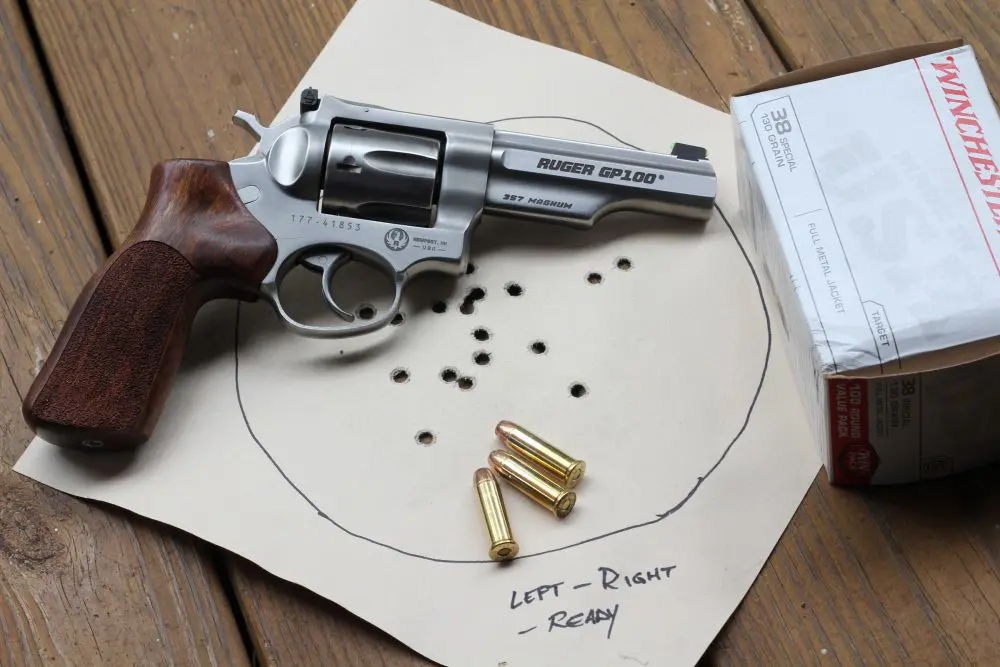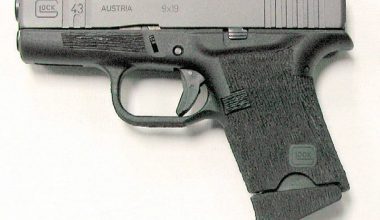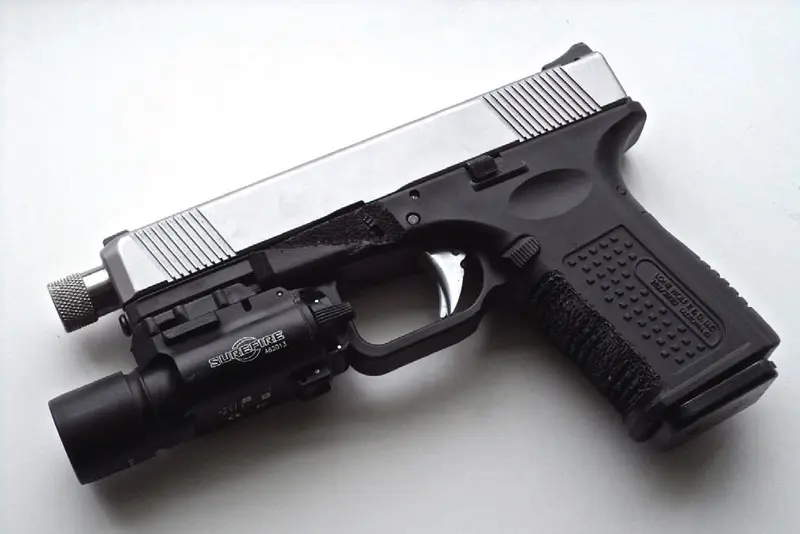
I am going out on a limb and assume (yes, I know what it potentially means…) you are reading this article because you are concerned about your personal security.
Readers who gravitate to articles like this are usually combative in nature— those who are “ready and willing to fight” if no other alternative is available. They have considered the world as it really is, given critical thought to how to prepare, selected their equipment carefully, and then undertaken taskspecific training so they can perform at the highest possible level. Any of these stages left out means failure is a greater possibility. The more bases covered, the more likely one will prevail when a crisis arises.
Table of Contents
SHEEP, WOLVES AND SHEEPDOGS
Those who willingly enter this arena understand the concept of sheep, wolves and sheepdogs, namely that the world can be broken down into three types of humans. The sheep (AKA “sheeple”) are those who just la-la through life, focused on their latte and electronic devices, have no idea what is going on in the world, and are more concerned with what Beyonce is wearing than what ISIS is doing.
The wolves are those who prey on the sheeple. They are everyone from hackers looking to steal your identity, to violent criminals who rob, rape and murder, to terrorists who do basically the same thing. What’s the difference between a street killer and an international terrorist? Nothing, really—they both want to kill you. If they want to take what you have without compensation or by violent means, they are wolves.
The sheepdog is the individual who protects the sheeple from the wolves. The most obvious are law enforcement and the military, who are compensated and duty bound to stand between those who would prey upon society and the society they are sworn to protect. Sheeple call the sheepdogs when their world is disrupted, but then slam the sheepdogs when they have to see the ugliness of what protecting them really entails.
There is no kind, nice, simple, delicate way to deliver force. It is ugly, muddy, bloody and most unpleasant. It is not something to be glamorized or fantasized about, though many do.
Sheepdogs are not always cops or military. Many are legally armed citizens, those who draw a line in the sand and decide they will not be victims! I train these people every week and am damn proud to do so. They are the folks who make this country great.
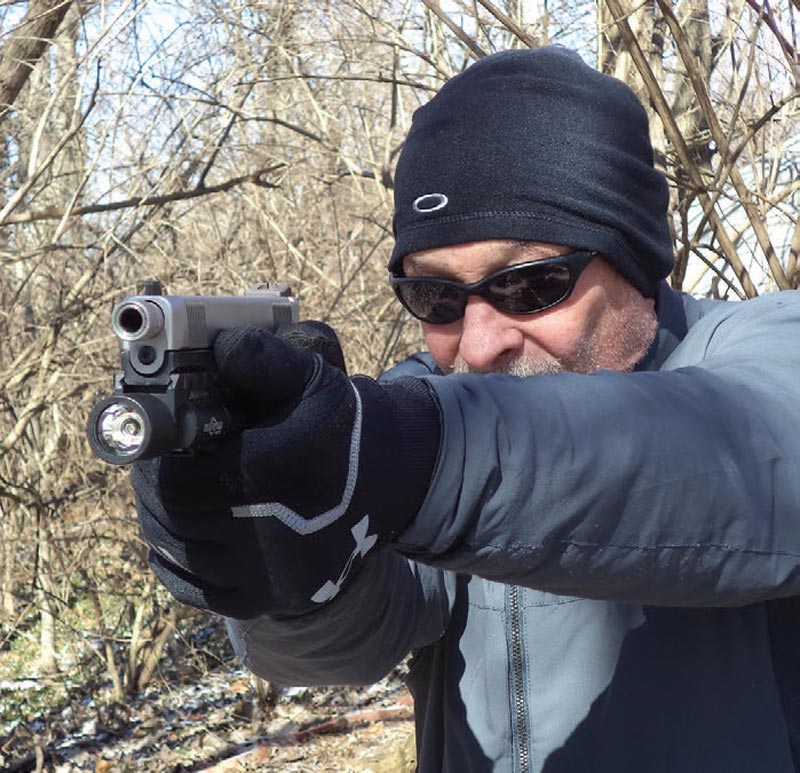
LIKE A WOLF
In 2010, I was awarded the Law Enforcement Trainer of the Year Award by the editorial board of Law Officer Magazine and the Board of Directors of The International Law Enforcement Education and Training Association (ILEETA), the largest LE training association in the world.
After accepting the award, I lectured on “Developing the Combative Mind” and then sat down with “Coach” Bob Lindsey, one of the most respected police trainers in the nation.
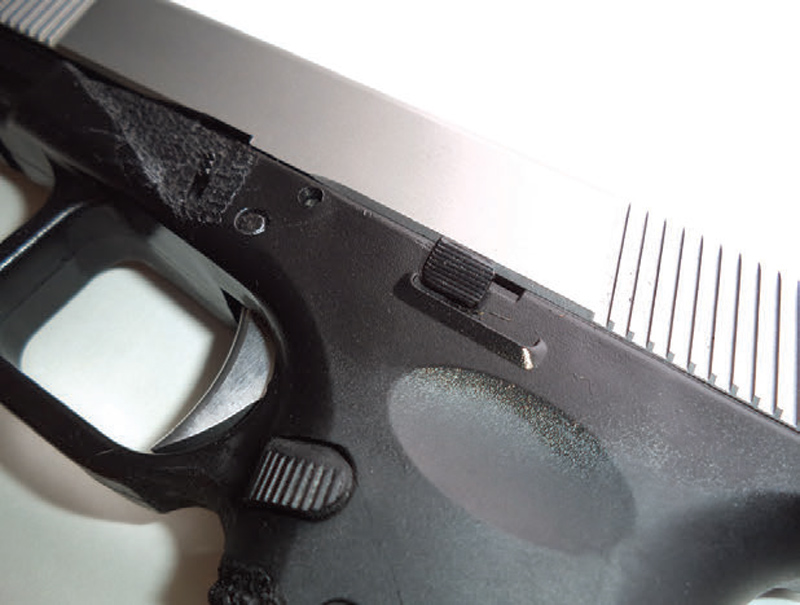
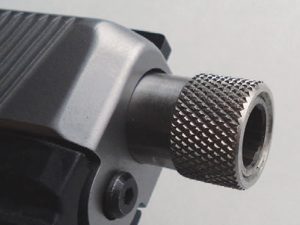
After listening to my lecture and discussing police training topics with me, Coach Lindsey gave me one of the nicest compliments I have ever received: “You know, there is no doubt you are a sheepdog, but after watching and listening to you, I know there is a bit of wolf in there, too.”
I have spent a lifetime developing these wolf-like tendencies. You cannot combat the wolves unless you understand them, and to do this you must be a bit like them. So anyone who is a true sheepdog must be part wolf!
Understanding how the wolves think and preparing for the confrontation to come are vital. If it never comes, great, but this is not how wolves think— they are predators, so conflict is inevitable. The sheepdog deters the conflict by knowing it will come. Preparation is essential and part of this preparation is selecting the right gear.
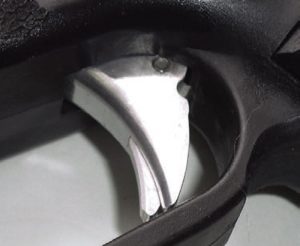
Off-the-shelf equipment sometimes does not meet my needs, which is fine as I have no reservations about customizing my gear to maximize my performance. Some will tell you not to do this due to “liability,” but I would rather perform to my maximum level during the confrontation and be here to explain it later than have equipment that does not rise to my expectations because I am worried about being sued after the fact. The choice is yours.
THE PISTOL AS WOLF
I focus on the semiautomatic pistol as it is the firearm I am likely to have with me when hostilities break out. Since I like to customize my gear, I began to consider the warnings about modifying a factory gun to a custom tool. What if the gun were built from the ground up as custom, using parts from the same manufacturer? The gun would have the features I like but would not be “modified factory,” as the parts were built to be packaged together by the same company. With that in mind, I built what I call the “Wolf Pistol,” including those features I want in a fighting gun.
I have been impressed with the quality of components coming from Lone Wolf Distributors for many years. I have added their parts to various Glock pistols with great satisfaction and, as the company grew, so did the number of components offered.
Today, a complete “non-Glock” can be built from Lone Wolf parts without a single Glock factory part being used, so I decided to do so. This would allow me to have the grip configuration, trigger, sights, barrel, and other related features without modifying a factory Glock.
I selected the mid-size Model 19 frame and slide, because I consider this pistol both big enough and small enough. Compact guns are easy to carry, but when the feces hits the fan, they are not a “handful of gun,” making them more difficult to manipulate, shoot well, and fight with at a high level of effectiveness. Keep in mind that you carry a handgun not as a fashion statement but a tool of personal security. Carry one that will enhance your ability to fight, not just “be armed.”
The Lone Wolf frame already has most of the features I would want if I were to have a gunsmith customize my pistol—a reduced grip frame and rounded trigger guard. What I did want to change on this grip were the finger grooves on the front strap, extended beaver tail, and a higher cut where the trigger guard meets the grip.
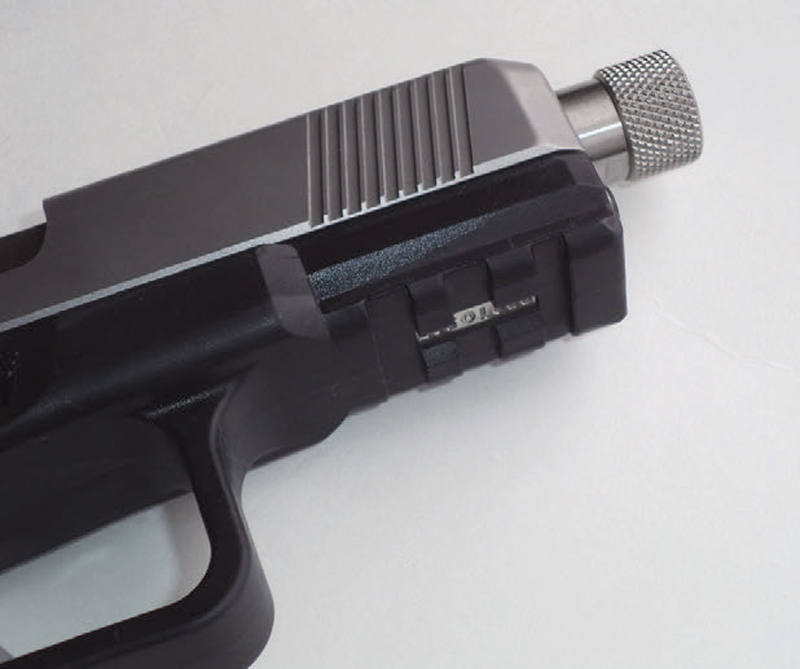
NO GLOCK PARTS
While not pretty, I was able to make these changes in about 15 minutes with the help of a Dremel tool and soldering iron. I used a grinding wheel on my Dremel to remove the finger grooves, reduce the beavertail, and cut a higher groove behind the trigger guard. I wanted to get my shooting hand as high as possible to the bore line to reduce recoil.
I then stippled the front strap with the soldering iron to a texture I liked. Again, not pretty, but quite effective both in function and price. Because the Lone Wolf frame is made with a Picatinny Rail system cut into the dust cover, mounting my favorite SureFire X300 was easy.
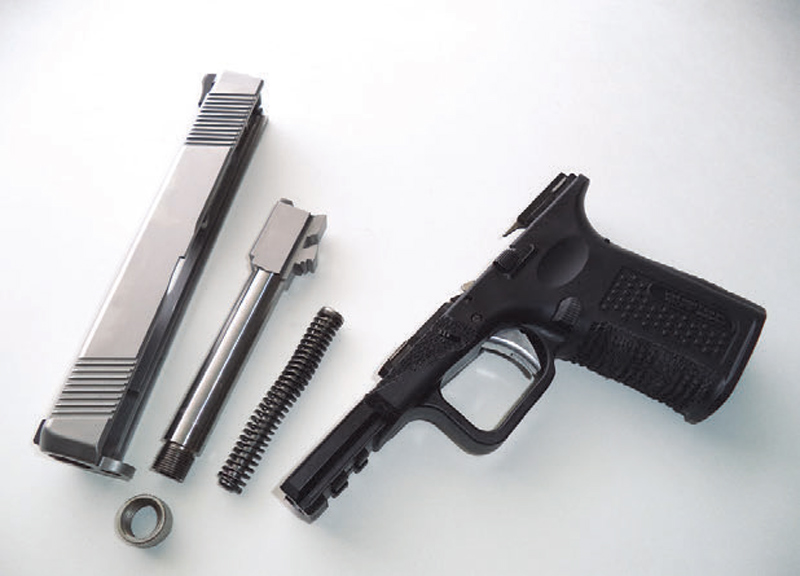
The stainless steel Lone Wolf slide comes equipped with front and rear cocking serrations, so no modifications were required. Lone Wolf can also supply slides with a Cerakote finish or cut to accept mini red dot sights.
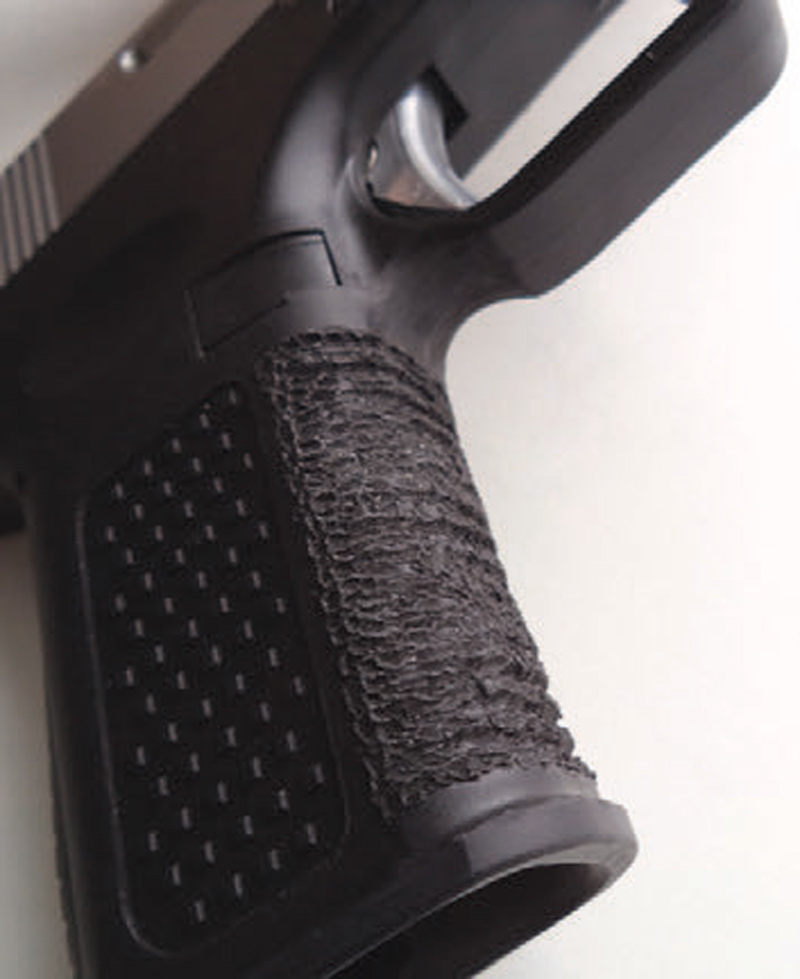
I opted to add the excellent Heinie Figure Eight sights to my pistol, as I like the thin front sight married to a deep and narrow rear window that is also serrated. While I no longer believe tritium night sights are necessary, the Heinies are equipped with them and do help when used in inconsistent light environments. Richard Heinie makes some of the finest combat sights found anywhere—check them out.
A part I used that was not a Lone Wolf product was the TangoDown Vickers slide lock lever. It’s similar to a stock Glock lever but offers additional surface area so it can be used as a slide release via the shooting or support hand thumb. I have used this method since the late 1970s. I did have to remove a bit of the lever at the rear to keep my shooting hand thumb from resting on it, but this is both fast and easy to do.
Using a stainless Lone Wolf barrel was a no-brainer. They have proven to offer a superior fit, are quite accurate, and allow for the shooting of any ammo style including lead bullets. I first bought a Lone Wolf barrel for a Glock when ammo was very hard to find and lead reloads were all that were available. The barrel worked great and I have not looked back since.
For this gun I opted for an extended suppressor-capable barrel, because suppressor use is becoming increasingly popular and adding another capability to the Wolf Pistol seemed like a good idea.
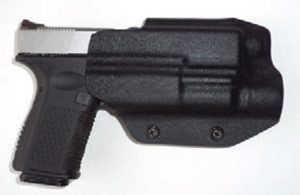
I incorporated a Lone Wolf captured recoil guide rod and spring, which some caution against on a factory Glock frame. Glocks are designed to flex when fired, and according to Glock, a metal recoil guide rod can interfere with this. In addition, metal guide rods can eat up the inside of a stock Glock frame. The Lone Wolf frames are designed to accept the solid rod, so I used it on this pistol.
Another excellent Lone Wolf product I incorporated into this gun was their UAT trigger system. Short for Ultimate Adjustable Trigger, the UAT allows the end user to adjust both the pre- and over-travel of their trigger, reducing unwanted movement to a minimum.
I have long stated “trigger control is weapon control” and that whatever excessive motion you apply to the trigger translates through the whole gun, thus having a smooth, easy to manipulate trigger will result in better shooting. The UAT is quite ingenious, as it is both simple to do (it can be done with the trigger in the frame) and works very, very well.
Some will criticize the use of screw adjustments, but I solved this potential problem by adjusting my trigger where I wanted it and then Super Gluing the screws in place. After several thousand rounds, the screws in the trigger have not moved at all. The UAT is metal—if I ever wish to change the settings, I could do so with some heat applied with a heat gun.
DIFFERENT WOLVES
Last, but certainly not least, were the springs used to operate the Wolf Pistol. This was another place where I chose not to use Lone Wolf parts, but opted for another wolf product—in this case Wolff Gun Springs.
I have used Wolff Gun Springs since the early 1990s with excellent results. Many consumers do not realize most gun companies job out springs and, while they may operate “in spec,” they are not always consistent in quality. Wolff makes their own springs and the quality is always exceptionally high and consistent.
For the Wolf Pistol, I used a reduced- power safety plunger spring and six-pound trigger and striker springs, which resulted in a 5.25-pound smooth trigger with minimal slack and overtravel. The Wolf Pistol ended up as close to a 1911 trigger as a pivoting (in contrast to a sliding) trigger system can! Accuracy proved exceptional, with 25-yard off-hand shots staying inside a human heart-size target.
I mated the Wolf Pistol to a SureFire X300 weaponlight and an X-Concealment/ Templar Custom CAP holster for routine carry. SureFire, while a bit more expensive than other companies, makes lights that work all the time in a wide range of environments, something lesser quality lights cannot always say.
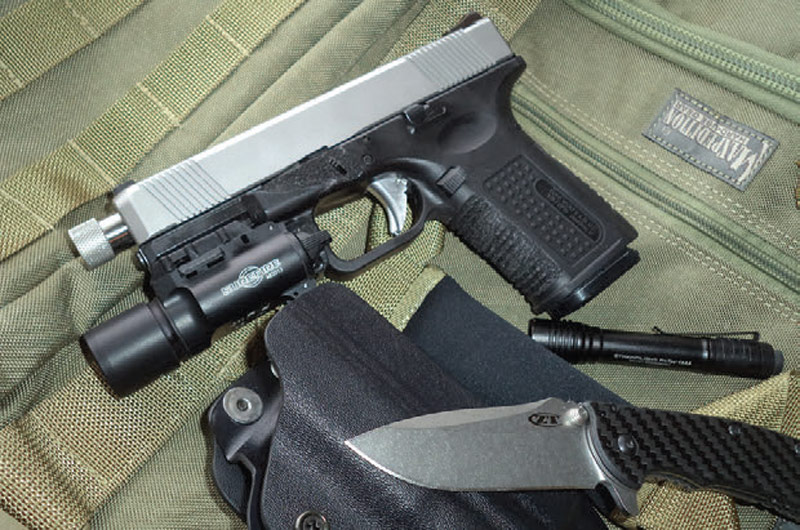
HOLSTER AND AMMO
The Combative Application Pistol (CAP) holster is my design and is manufactured by X-Concealment exclusively for Templar Custom Arms. It combines the convenience of a paddle rig with the stability of a belt holster and the close fit of a pancake-style rig.
I designed a “belt claw” that fits over both the belt and trouser band to hold the gun in tight while keeping it from traveling on the belt during routine wear. When you need to draw your fighting pistol, you need it now. Having to do a search due to holster shift is unacceptable.
I will feed my Wolf Pistol with one of several street-proven loads, to include Speer Gold Dot 124-grain +P, Federal HST 124-grain +P, and Winchester 127-grain +P+ Ranger T. These loads have proven to “hit above their weight class” in actual shootings and are exceptionally accurate from this handgun.
While 147-grain loadings in 9mm have greatly improved in recent years, the 9mm cartridge was designed around a 124-grain bullet, so it makes sense to me to stick with this bullet weight.
There you have it: my idea of a perfect fighting pistol without having to modify a factory handgun. I’m sure this will spark debate among the “legal eagles,” which is good.
In the end, you need to prevail in the fight first and be prepared to articulate why you did what you did after the fact—and this will include the tools you used.
